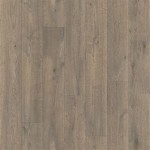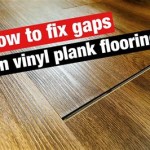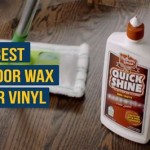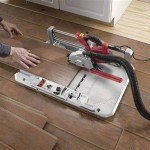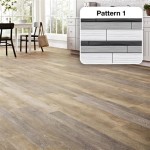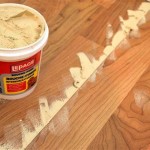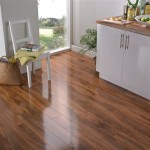Restoration Oak Wood Flooring: A Comprehensive Guide
Oak wood flooring has long been a staple in both residential and commercial properties, prized for its durability, natural beauty, and timeless appeal. Over time, however, even the most robust oak floor can show signs of wear and tear, accumulating scratches, dents, and discoloration. Rather than resorting to complete replacement, restoration offers a cost-effective solution to revive the original splendor of oak flooring, extending its lifespan and preserving its character. This article provides a detailed examination of the restoration process for oak wood flooring, outlining the key stages, techniques, and considerations involved.
Restoration is a multifaceted approach encompassing various techniques aimed at repairing, refinishing, and protecting existing oak floors. It differs from simple refinishing, which primarily focuses on sanding and applying a new finish, as restoration addresses underlying structural issues and significant surface damage. The extent of restoration work required depends heavily on the condition of the floor, the type of damage present, and the desired aesthetic outcome. A professional assessment is crucial to determine the most appropriate restoration strategy.
Key Point 1: Assessing the Condition and Determining the Scope of Work
The initial step in restoring oak wood flooring involves a thorough assessment of its current state. This evaluation considers several factors, including the type of oak flooring (e.g., solid, engineered, parquet), the age of the floor, the presence of any structural damage such as warping, cupping, or loose boards, and the degree of surface wear, including scratches, dents, stains, and finish degradation. A moisture test is also essential to identify potential moisture-related problems that could affect the restoration process and the long-term stability of the floor.
Based on the assessment, a detailed plan of action is formulated, outlining the specific restoration techniques that will be employed. This plan should identify any necessary repairs to the subfloor, replacing or securing loose boards, filling gaps, and addressing any underlying moisture issues. The plan should also specify the sanding process, including the grit sequence, the type of finish to be applied (e.g., polyurethane, oil-based, water-based), and the desired sheen level. This detailed plan ensures that the restoration process aligns with the client's expectations and the specific needs of the floor.
One critical aspect of the assessment is determining the thickness of the oak wear layer, particularly in engineered flooring. Engineered oak flooring consists of a thin layer of solid oak bonded to a core of plywood or other composite material. If the wear layer is too thin, aggressive sanding may remove the entire veneer, rendering the floor irreparable. In such cases, replacement may be the only viable option. However, if the wear layer is sufficient, restoration can successfully rejuvenate the floor.
Furthermore, the presence of lead-based paint or coatings should be considered, especially in older homes. If lead is suspected, testing is necessary, and appropriate safety precautions must be taken during the sanding process to protect workers and occupants from lead exposure. Professionals are equipped with the necessary training and equipment to safely handle lead-containing materials.
Key Point 2: The Restoration Process: Repair, Sanding, and Finishing
The restoration process typically involves several distinct phases, beginning with repairs. Any loose or damaged boards must be secured or replaced. Loose boards can often be re-nailed or screwed into the subfloor. Severely damaged boards, however, may require replacement. When replacing boards, it is essential to match the existing oak flooring as closely as possible in terms of wood species, grain pattern, and cut (e.g., plain sawn, quarter sawn, rift sawn). Blending the new boards seamlessly with the existing floor requires careful attention to detail and expertise.
Gap filling is another important aspect of the repair phase. Gaps between boards can develop over time due to seasonal changes in humidity and temperature, causing the wood to expand and contract. Small gaps can be filled with wood filler or epoxy. For larger gaps, slivers of wood can be carefully inserted and glued into place. The choice of gap filling material depends on the width of the gap and the desired aesthetic outcome.
Once the repairs are complete, the floor is meticulously sanded to remove the existing finish, level the surface, and eliminate scratches and dents. The sanding process typically involves multiple passes with progressively finer grits of sandpaper. A coarse grit is used initially to remove the old finish and level the floor, followed by medium and fine grits to refine the surface and prepare it for finishing. Edge sanders are used to reach areas along walls and in corners that are inaccessible to larger sanding machines. Dust collection systems are essential to minimize airborne dust during the sanding process, creating a cleaner and healthier work environment.
After sanding, the floor is thoroughly cleaned to remove any remaining dust or debris. Stain, if desired, is then applied to the bare wood. The choice of stain color is a matter of personal preference, but it is important to consider the existing décor of the room and the overall style of the home. Multiple coats of stain may be required to achieve the desired color intensity. After the stain has dried completely, the finish is applied. The finish protects the wood from wear and tear, enhances its beauty, and determines its sheen level. Common types of finishes include polyurethane, oil-based finishes, and water-based finishes. Each type of finish has its own advantages and disadvantages in terms of durability, appearance, drying time, and VOC emissions.
Key Point 3: Types of Finishes and Maintenance Considerations
The selection of the appropriate finish is crucial for both the aesthetic appeal and long-term protection of the restored oak floor. Polyurethane finishes are known for their durability and resistance to scratches and stains. They are available in both oil-based and water-based formulations. Oil-based polyurethanes are generally more durable and provide a warmer, richer appearance, but they have higher VOC emissions and longer drying times. Water-based polyurethanes are more environmentally friendly, have lower VOC emissions, and dry more quickly, but may not be as durable as oil-based options.
Oil-based finishes, such as penetrating oils or hard wax oils, offer a more natural look and feel. They penetrate the wood fibers, providing protection from within, and are often preferred for their ability to enhance the natural grain and color of the oak. Oil-based finishes are also relatively easy to repair and maintain, as scratches and blemishes can often be spot-treated without the need to refinish the entire floor. However, oil-based finishes may require more frequent maintenance than polyurethane finishes.
Water-based finishes are gaining popularity due to their low VOC content and fast drying times. They are available in a variety of sheens, from matte to high gloss, and provide a durable and long-lasting finish. Water-based finishes are also less likely to yellow over time compared to oil-based finishes, maintaining the original color of the wood. The choice between these finishes rests on homeowner preference, the desired aesthetic, and concerns regarding environmental impact. Each finish reacts differently to the wood so testing a small, inconspicuous area is always recommended.
Proper maintenance is essential to prolong the life of a restored oak floor. Regular sweeping or vacuuming removes dirt and debris that can scratch the finish. Occasional damp mopping with a pH-neutral cleaner is recommended to remove stubborn stains. Avoid using harsh chemicals or abrasive cleaners, as these can damage the finish. Placing mats at entrances and area rugs in high-traffic areas can help protect the floor from wear and tear. Furniture pads should be used under chair and table legs to prevent scratches and dents. By following these simple maintenance tips, a restored oak floor can retain its beauty and durability for many years to come.
The cost of restoration varies depending on several factors, including the size of the floor, the extent of the damage, the type of finish selected, and the labor rates in the area. Obtaining multiple quotes from reputable flooring contractors is recommended to ensure a fair price and high-quality workmanship. While restoration may require a significant investment, it is often a more cost-effective and environmentally friendly option compared to replacing an existing oak floor. By entrusting the restoration process to experienced professionals and maintaining the floor properly, homeowners can enjoy the timeless beauty and lasting value of their oak flooring for generations to come.

Line Studio Style 7 48 X 8 Qs101 Color Restoration Oak 07b47a Quick Step

Quickstep Studio Spill Repel Restoration Oak 12 Mm T X 7 In W 48 L Waterproof Wood Plank Laminate Flooring 19 63 Sq Ft Carton Qs101 At Com

Quickstep Studio Spill Repel Restoration Oak 12 Mm T X 7 In W 48 L Waterproof Laminate Flooring 19 63 Sq Ft Carton Com

Quickstep Studio Spill Repel Restoration Oak 12 Mm T X 7 In W 48 L Waterproof Wood Plank Laminate Flooring 19 63 Sq Ft Carton Qs101 At Com

Restoring Oak Flooring

Oak Wooden Flooring Restoration Using Traditional Techniques Woodwork Re Damaged Wood

How To Install Lowe S Quickstep Studio Restoration Oak Laminate Flooring Awesome Looking And

Quickstep Studio Spill Repel Restoration Oak 7 48 In W X 47 24 L Proarb

Krono Original Grey Restoration Oak 10 Mm T X 8 In W Waterproof Laminate Wood Flooring 18 6 Sqft Case Ko22h00610p The Home Depot

Oak Wooden Flooring Restoration Using Traditional Techniques Woodwork Re Damaged Wood
Related Posts

